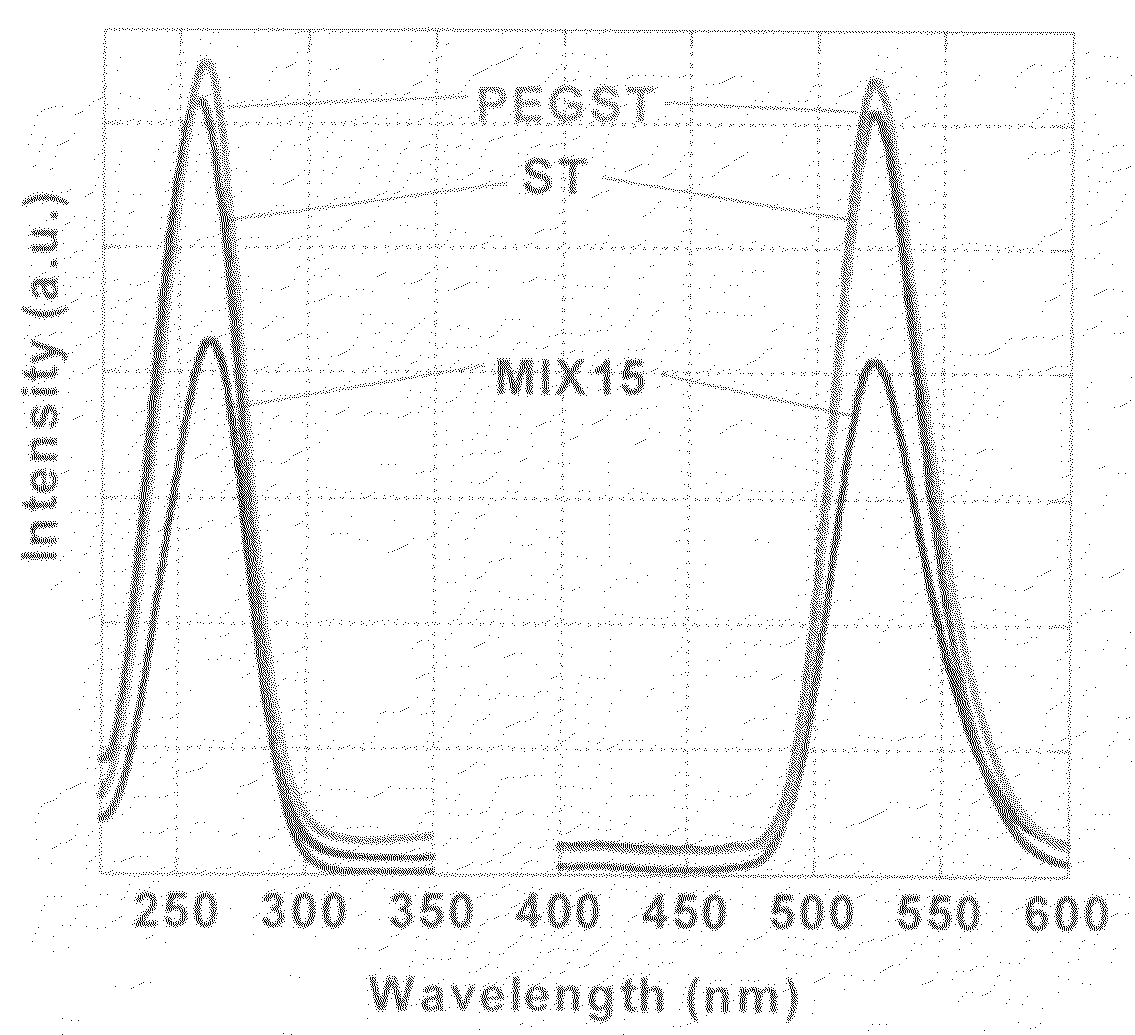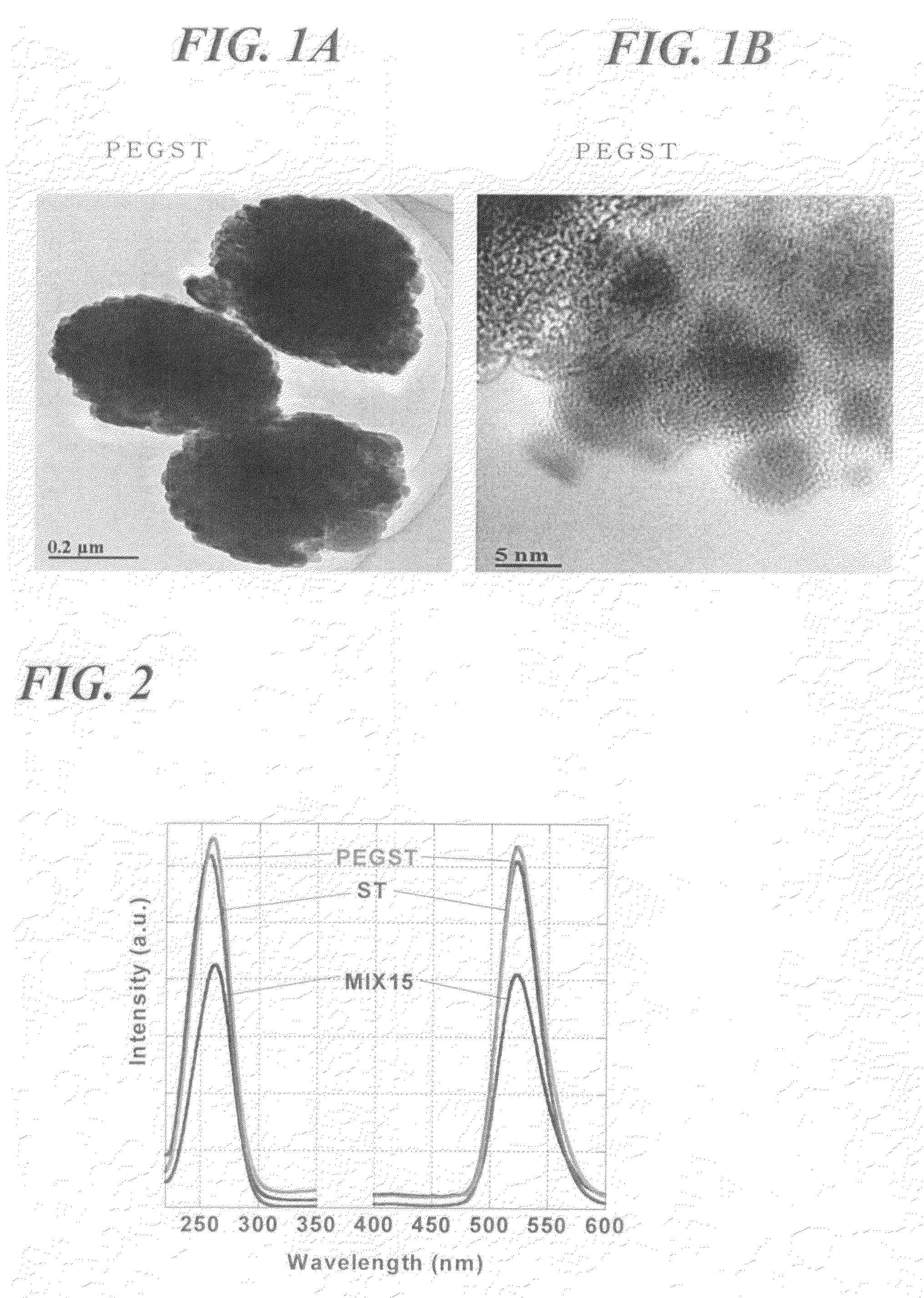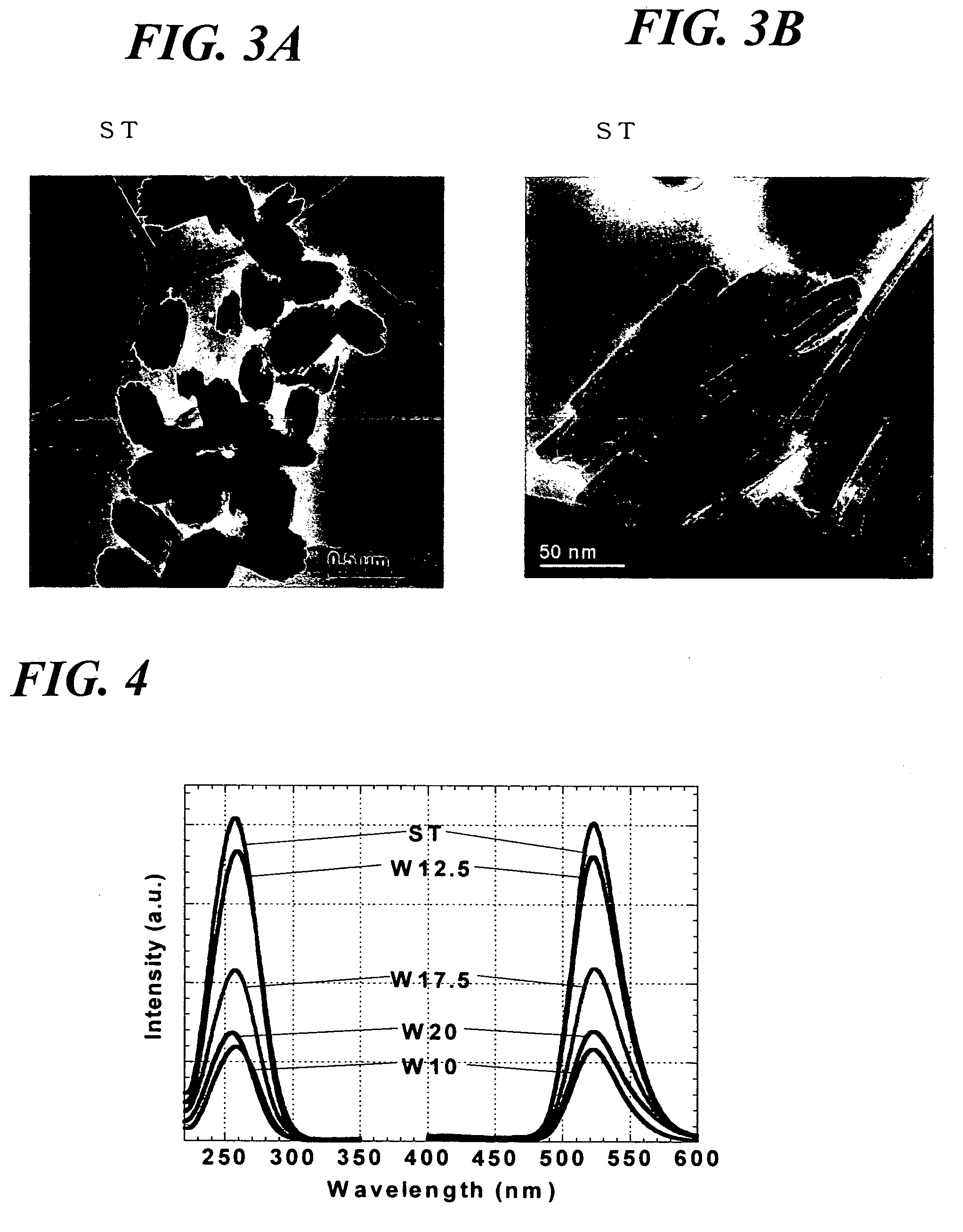Phosphor and production process for the same
a technology of phosphor and phosphor, which is applied in the direction of cellulosic plastic layered products, natural mineral layered products, chemical production, etc., can solve the problems of phosphor with sufficiently satisfactory characteristics that have not yet been obtained, deterioration of luminescence characteristics, and lattice strain and lattice defect, etc., to achieve high luminescence efficiency
- Summary
- Abstract
- Description
- Claims
- Application Information
AI Technical Summary
Benefits of technology
Problems solved by technology
Method used
Image
Examples
example 1
[0101]Zinc acetate tetrahydrate in an amount of 4.302 g (1.96×10−2 mol) and 0.098 g (4.00×10−4 mol) of manganese acetate dihydrate were dissolved in 15 cm3 of ultrapure water so that Mn / Zn molar ratio was set on 2 / 98. The resultant solution was charged with a mixed solution consisting of 4.0 g of polyethylene glycol (PEG) having a weight average molecular weight of 4,000, 2.083 g (1.00×10−2 mol) of tetraethoxysilane, and 15 cm3 of ethanol (water / ethanol ratio by volume of 1 / 1) under stirring for 10 minutes to prepare a precursor sol.
[0102]Subsequently a glass-made vessel containing 30 cm3 of ethanol was placed in an autoclave, and 15 cm3 of the precursor sol was introduced in the vessel. The temperature in the autoclave was raised to 265° C. at a rate of 4 K / min with the pressure raised to 9.5 MPa, and the ethanol was brought to a supercritical state, which was maintained for 2 hours. Thereafter the solvent was removed and the product was dried at 265° C. for 2 hours to obtain a pho...
example 2
[0104]The procedure in Example 1 was repeated to obtain a phosphor except that 2.0 g of PEG having a Mw of 400 was used. The phosphor thus obtained had luminescent intensity almost comparable to that of the PEGST as obtained in Example 1.
example 3
[0105]Zinc acetate tetrahydrate in an amount of 4.302 g (1.96×10−2 mol) and 0.098 g (4.00×10−4 mol) of manganese acetate dihydrate were dissolved in 15 cm3 of ultrapure water so that Mn / Zn molar ratio was set on 2 / 98. The resultant solution was charged with a mixed solution consisting of 2.083 g (1.00×10−2 mol) of tetraethoxysilane, and 15 cm3 of ethanol (water / ethanol ratio by volume of 1 / 1) under stirring for 10 minutes to prepare a precursor sol.
[0106]Subsequently a glass-made inner cylinder was placed in an autoclave, 30 cm3 of ethanol was added in the cylinder, and a vial containing 15 cm3 of the precursor sol was set so as not to come into direct contact with the ethanol. The temperature in the autoclave was raised to 265° C. at a rate of 4 K / min with the pressure raised to 9.5 MPa, and the ethanol was brought to a supercritical state, which was maintained for 2 hours. Thereafter the solvent was removed and the product was dried at 265° C. for 2 hours to obtain a phosphor (ST)...
PUM
| Property | Measurement | Unit |
|---|---|---|
| particle diameter | aaaaa | aaaaa |
| critical pressure | aaaaa | aaaaa |
| critical temperature | aaaaa | aaaaa |
Abstract
Description
Claims
Application Information
 Login to View More
Login to View More - R&D
- Intellectual Property
- Life Sciences
- Materials
- Tech Scout
- Unparalleled Data Quality
- Higher Quality Content
- 60% Fewer Hallucinations
Browse by: Latest US Patents, China's latest patents, Technical Efficacy Thesaurus, Application Domain, Technology Topic, Popular Technical Reports.
© 2025 PatSnap. All rights reserved.Legal|Privacy policy|Modern Slavery Act Transparency Statement|Sitemap|About US| Contact US: help@patsnap.com



